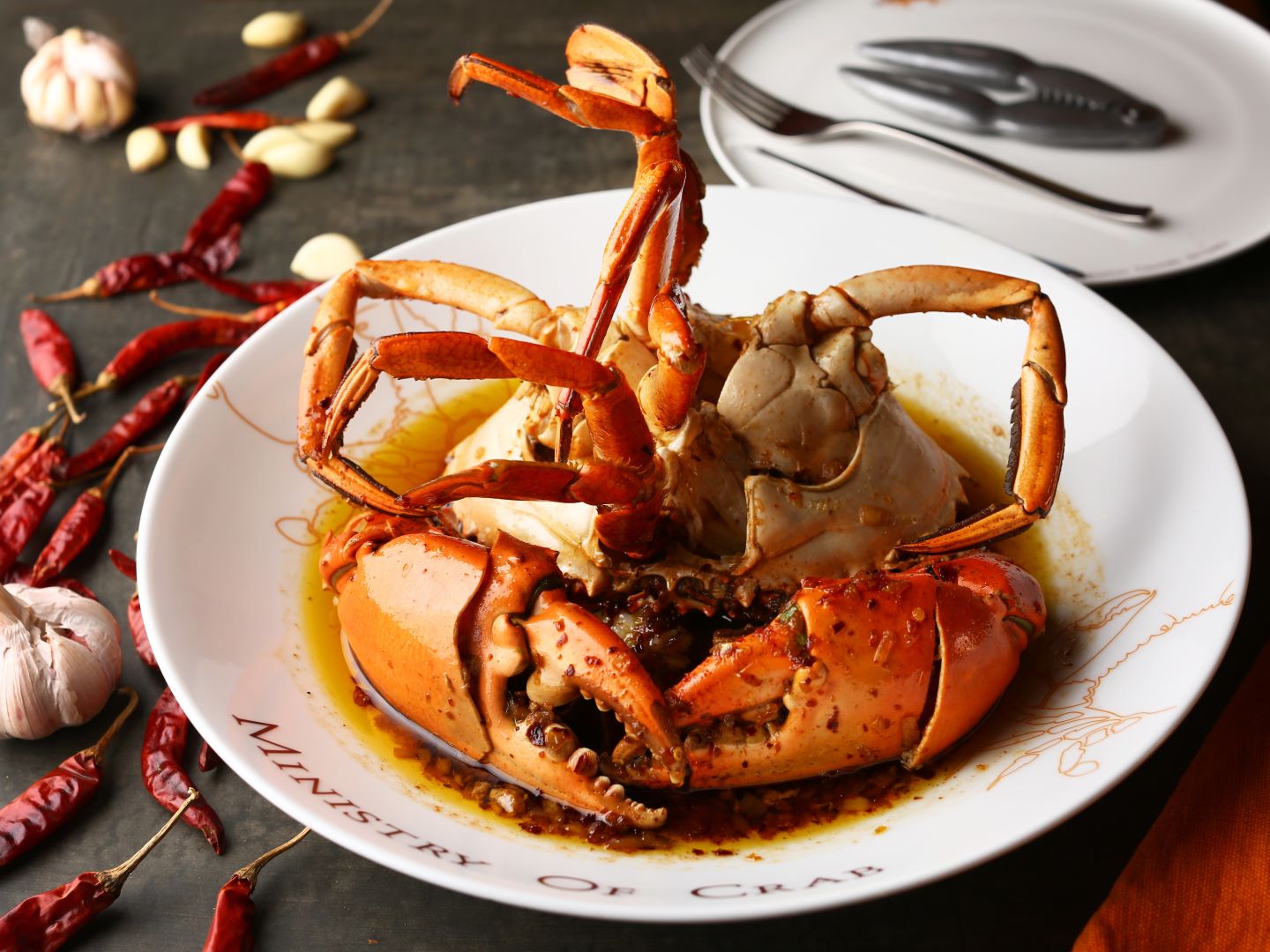
Garlic chilli crab (All photos: Ministry of Crab)
The best tales usually start with a good beginning. Something compelling that draws you in. For celebrated F&B personality Dharshan Munidasa, however, it was quite the opposite. It was bad food that piqued his curiosity, leading him to transform his experience of terrible student meals into the genesis of what is now Sri Lanka’s most successful culinary story.
“I was at university in the US and I did not like the food served in the dormitories and so had to start cooking to feed myself,” says the 54-year-old self-taught chef-restaurateur. “When I started, I realised I needed to have a ‘method to the madness’, so to speak. I began developing menus that corresponded to my daily grocery and to-do lists.”
Born in Tokyo to a Japanese mother and Sri Lankan father, Munidasa spent part of his childhood in Japan and then Sri Lanka before leaving for the US, where he graduated with a double degree in computer engineering and international relations from the renowned Johns Hopkins University in Baltimore, Maryland. “In the US, it wasn’t about missing Japanese or Sri Lankan flavours. It was about trying to create something with taste … something good to eat,” he says.
dharshan_munidasa_1.jpg
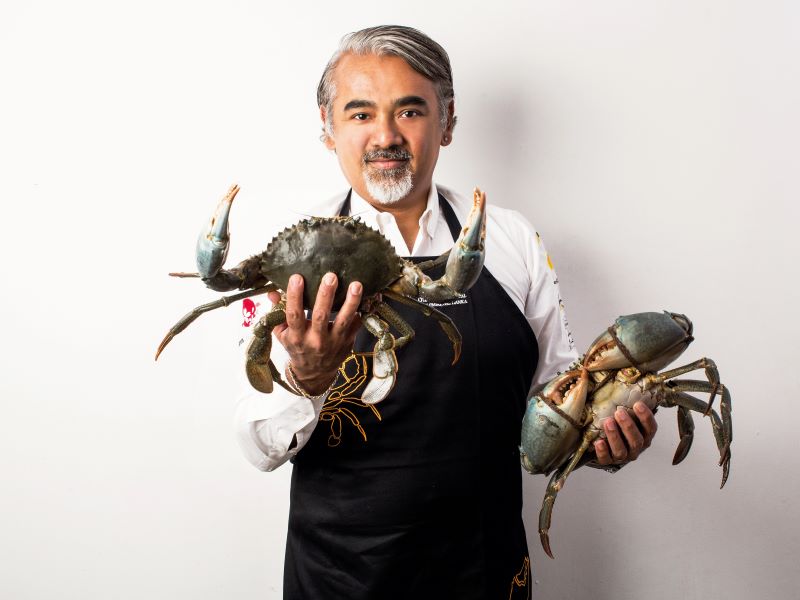
Blessed with a curious palate and culinary intuition, Munidasa began with the basics, like pulling apart a chicken and saving the bones to make stock or buying the cheapest part of the salmon — its head — like all thrifty undergrads are wont to do and using it to make salt-grilled shioyaki using the communal oven. “I would carry salt from Sri Lanka all the way to the US to make my own pickles. My roommates were witness to these shenanigans.”
Good things (and tempting smells emanating from the kitchen) do not go unnoticed and, as a result of his experiments, almost two dozen students — even those from neighbouring universities — would regularly show up at his place on Friday nights. “It became somewhat of a Japanese restaurant,” he laughs. “This would later translate into Nihonbashi, the first restaurant I opened after returning to Sri Lanka post-graduation.”
Crazy for crab
For most makan-conscious Malaysians, it would be inconceivable if a Sri Lankan pitstop — for work or play — did not include at least one meal at Ministry of Crab, arguably Munidasa’s flagship and most famous restaurant. Housed in Colombo’s historic Dutch Hospital, now transformed into a complex offering good food, cold drinks and some cool buys, the 13-year-old fixture on international best restaurant lists is the ultimate place at which to indulge in crustaceans of almost every order, although as its name suggests, crab — so fleshy and meaty they are often nicknamed crabzillas — is the way to go.
Whichever Ministry outlet around the world, rest assured only the best, wild-caught mud crabs from Sri Lanka’s northern coastal belt are served. “We don’t use crabs weighing below 500g each and have practised this since the inception of Ministry of Crab in 2011,” stresses Munidasa. “I am proud that we have been a proponent of legislation to curtail harvesting, trade and export of mud crabs below 400g introduced earlier this year.” It might interest some to know that Ministry of Crab also implements a “no freezer” policy and vehemently avoids purchasing any frozen food.
“With this conscious decision, we save energy twice more than any other restaurant. I must also add how the freshwater prawns used at our outlets are farm-grown and released into reservoirs and lakes where they can grow to be of great size. Only local fishermen are permitted to fish in these lakes, thus creating a financial safety net for them and more economic activity in rural communities of Sri Lanka. This initiative has helped many of them gain financial stability and security as a result of the increased consistency of the prawn supply, and therefore income. Organic aquaculture also extends to the clams and oysters used at Ministry of Crab,” he says.
interior_2.jpg
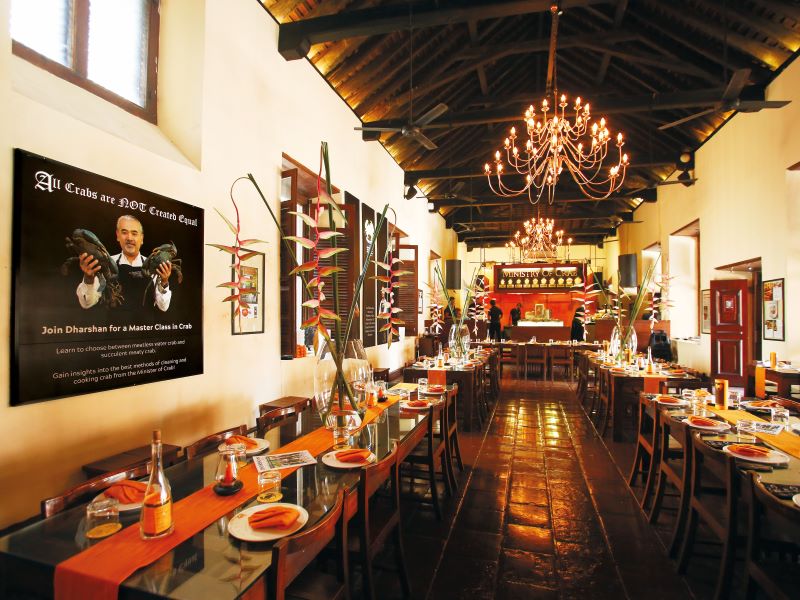
“Given my mixed heritage, seafood was a big part of my childhood. After we moved to Sri Lanka in the 1970s, crabmongers used to visit door-to-door and my mother buying live ones to cook at home for our dinner was always a delight! Crabs have always been a culinary gem of the country, appreciated in Singapore and Malaysia since the 1980s, and it is such a great ingredient. In my TV programme [Culinary Journeys with Dharshan], I showcased these majestic creatures and had an entire episode dedicated to them. One segment was shot in Sri Lanka with Sisira, my crab supplier, and a few more were filmed in Singapore: We showed our audience where to buy crabs, where it is popularly served and how it is cooked. This led to the pivotal moment when a friend who had watched the episode suggested that I open a crab restaurant. This was what gave life to the idea for Ministry of Crab!” What started as a “fun project” has morphed into a micro-empire, with restaurants in Colombo, Mumbai, the Maldives, Shanghai, Chengdu, Bangkok and now Singapore, where it has welcomed guests to its chic Dempsey Hill outlet since last month.
With such a strong regional growth trajectory, the next question is inevitably: Will Malaysia get its own outlet one day? To that Munidasa graciously replies, “Malaysia has always been on our radar. I’ve been visiting your country since childhood and have fond memories of the amazing cuisine that represents so many regions and cultures. It’s a great country, able to have all of these tastes in one place. I am definitely looking forward to more visits! Who knows? With our most recent opening in Singapore, Malaysia seems like a natural next step … given that we find the right location and the right partners.”
East meets far east
“Both my mother and father have had the greatest influence on shaping my palate and were a driving force in my culinary life. And travelling between Sri Lanka and Japan with them set the foundation for my own discoveries around Asia,” says Munidasa.
“I am well aware our family meals were in stark contrast to that of many others. Sri Lanka, with such an amazing coastline, meant we could get sashimi-grade fish straight off the boats and enjoy it soon after at home. My father also made sure to take us to nice restaurants and educate us on good food. He would bring us to our favourite family sushi place every time we were back in Japan. This ritual is such a personal experience to Japanese families, and once when I was 30, I visited the restaurant with my grandmother, mother and daughter — four generations of us — and explained to my daughter that the itamae-san behind the counter made sushi for me when I was her age and how it forges a strong bond between chef and patron. Visiting eateries in Tokyo with my parents and spending time talking to chefs at sushi counters during my childhood created lasting memories. Those experiences and tastes still linger on my palate and inspire me to this day.”
clay_pot_prawn_curry.jpg
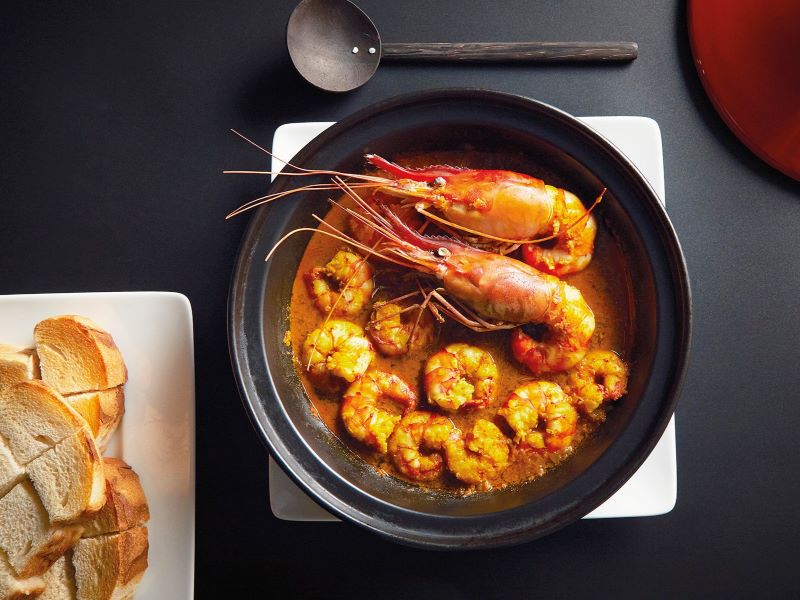
He adds how the seasons played an important role in deciding what the meal at home would be. “Even seaside barbecues in Japan would not feature your typical sausages or burgers. It was ingredient-driven, almost always seafood, and to the extent where it was location-specific, meaning we only used what was natural and at its best at that moment in time. Some of the best curries we’ve had were at the home of my distant relatives. Despite visiting them only once in five years or so, we always enjoyed the amazing local curry they made. Travelling between Sri Lanka and Japan meant that Malaysia, Singapore, Bangkok and Hong Kong were also regular stopovers during our flights. This exposed us to regional cuisines, from visiting Muthu’s Curry in Singapore for its fish head curry to claypot meals in Hong Kong, we have always been exposed to local flavours, and my appreciation for them continues to this day because of it.”
Taste of travel
Home for Munidasa though is unequivocally Colombo, where his house in the suburbs is “not more than 15 minutes” from Ministry of Crab and Nihonbashi. “I don’t know the meaning of a day off and will be at either restaurant whenever I am in the country,” he laughs. “But if you have never been to Sri Lanka, you must. Our new expressways mean you can get to interesting destinations in just two to three hours. In Colombo, I would suggest exploring Galle Face Green for street food like kottu roti (chopped flatbread and condiments) and hoppers, a crispy coconut crèpe. Visit Pettah Market, a wholesale district, which has amazing shops selling just about everything imaginable. It’s busy and colourful, with temples and churches, and shows how old this city is. A trip to the southern tip of the island will lead you to some of the most amazing beaches, then make your way to tea country in the mountains. It will take longer than a day trip, but you won’t see that type of landscape, with relatively fewer tourists, anywhere else.”
Those on holiday though would do well to try The Tuna & The Crab, Ministry’s sister restaurant in the beautiful seaside town of Galle and where its star item is mud crab okonomiyaki. “I was among the first to introduce okonomiyaki, a delicacy of the Kansai region, to Sri Lanka through Nihonbashi. It is such a fun dish to enjoy in Japan,” he says. “But you can easily make it yourself at home. As we have access to the finest mud crabs of Sri Lanka, this creation was a natural evolution, and what better place to launch it than at our restaurant in Galle?”
tuna_sahimi.jpg
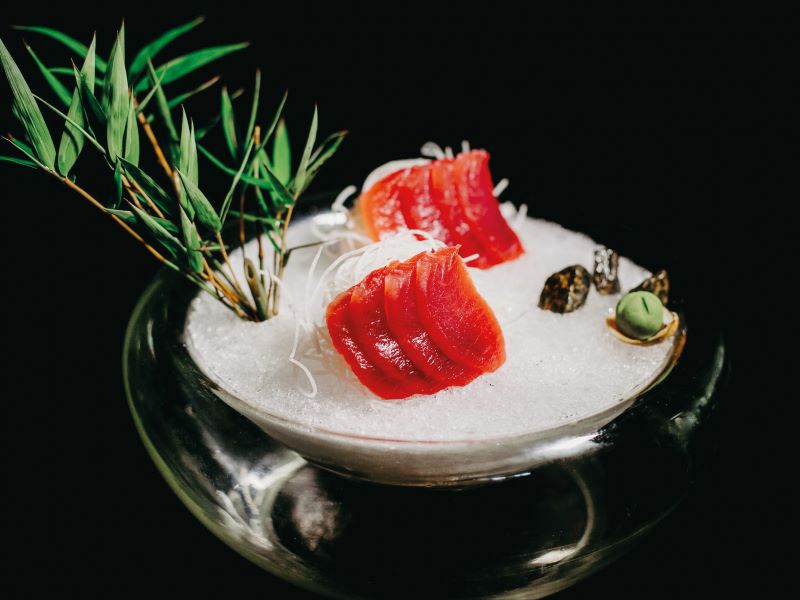
Munidasa’s first restaurant outside of Colombo, The Tuna & The Crab’s inception in 2014 was tied to the opening of the Southern Expressway. “This made it easy for many people to travel to the south of the country in less than an hour,” he points out. And like its Colombo sibling, it is also housed in the local Dutch Hospital. “Galle Fort is a Unesco World Heritage Site and one of the country’s biggest tourist destinations. When the Urban Development Authority, whose purview the Dutch Hospital comes under, initiated the project to turn it into a lifestyle hub for tourists visiting the fort, it was a great opportunity for us to take that space to showcase signature dishes from both Nihonbashi and Ministry of Crab.”
Munidasa is famously known for his work ethic and it would not surprise many that he looks for passion when hiring — something he has been doing a lot of, given the rise and rise of the Ministry empire. “The F&B industry is extremely volatile worldwide, so you need passion and drive to succeed. I would pick someone with the right attitude but no qualifications anytime. I want people who love food and are willing to learn.”
For hungry youngsters, he has this to say: “Know your produce. Know what your ingredients look and should taste like. You need to know where [something] is from, what it feeds on, as its taste ultimately depends on this simple fact. These are the things you will not learn in hotels or culinary schools. Only when you know your ingredients well can you make amazing food.”
Ministry of Crab Singapore is at Block 06, Dempsey Road. For reservations, call (+65) 8389 0948.
This article first appeared on Aug 12, 2024 in The Edge Malaysia.


